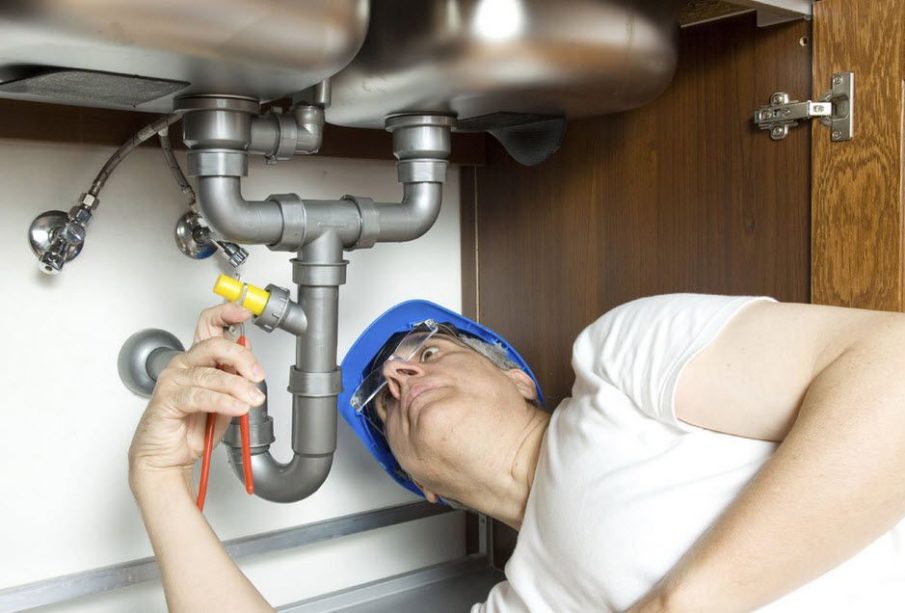Everyone seems to have their private rationale in relation to Plumbing Issues in Older Properties and How to Fix Them.

Older homes commonly include appeal, personality, and history, yet they can likewise bring a host of plumbing problems. Whether you're handling aging pipes, low tide pressure, or leakages, understanding just how to deal with these typical issues is important to keeping a safe and useful home. In this overview, we'll discover the normal plumbing challenges dealt with by older homes and give functional services to keep your plumbing in leading form.
Understanding Common Pipes Issues
Aging Pipes
One of the most typical issues in older homes is aging pipes. Depending on the era in which your home was constructed, the pipes may be made from products that have actually weakened with time, such as galvanized steel, cast iron, and even lead. These products can corrode, come to be weak, or establish leaks, bring about water damages and possible carcinogen.
Low Tide Pressure
If you're experiencing low tide pressure, it could be due to mineral deposits, rust inside the pipelines, or old components that are no more operating effectively. This can be a major trouble, specifically in areas like showers and sinks.
Dripping Pipes
Leaks are an additional constant concern in older homes, frequently caused by corroded or damaged pipelines. Also little leakages can bring about considerable water damage, mold development, and raised water bills if not attended to quickly.
Outdated Fixtures
Obsolete plumbing components such as taps, bathrooms, and showerheads not just look old yet may likewise be much less effective, prone to leakages, or incompatible with contemporary pipes requirements.
Pipe Rust
Deterioration is a common trouble in older pipelines, especially those made from galvanized steel or cast iron. Rusty pipelines can restrict water circulation, cause staining, and at some point lead to leaks or pipe ruptureds.
Examining the Condition of Your Pipes
Evaluating Noticeable Pipes
Beginning by evaluating any kind of noticeable pipes in your house, such as those in basements, crawl spaces, or under sinks. Seek indications of rust, leaks, or corrosion, which can indicate underlying concerns.
Looking for Leaks
Look for leaks by inspecting locations around faucets, commodes, and under sinks. You can also monitor your water meter before and after a duration of no water make use of to discover surprise leaks.
Water Top Quality Testing
Older pipes can impact the quality of your water. Conduct a water high quality test to look for impurities such as lead, corrosion, or various other impurities that may be presented by maturing pipes.
Solutions for Usual Pipes Concerns
Changing Aging Pipes
If your home has old, weakening pipelines, take into consideration replacing them with modern materials like copper or PEX. This can be a considerable financial investment, but it will prevent future concerns and enhance the security and reliability of your pipes system.
Fixing Low Tide Stress
To take care of low water stress, begin by cleansing or changing old components and getting rid of mineral accumulation in the pipes. If the trouble lingers, it might be required to replace areas of rusty pipes.
Repairing and Replacing Leaking Pipes
For little leaks, you can make use of pipeline clamps or epoxy putty as a short-lived solution. However, it's ideal to change leaking pipes completely to prevent additional damage.
Updating Fixtures
Updating old components to modern, water-efficient models can boost your home's pipes efficiency and minimize water intake. Try to find components with the WaterSense tag for the very best efficiency.
Dealing with Pipeline Deterioration
If your pipes are corroded, replacing them with corrosion-resistant products like copper, PVC, or PEX is the very best option. Regular inspections and water top quality maintenance can help avoid further corrosion.
When to Call a Specialist
While some pipes problems can be managed with do it yourself options, there are times when it's finest to hire a specialist. If you're managing major leaks, substantial rust, or are unclear concerning the problem of your pipes, a licensed plumber can offer expert analysis and repair service.
Preventive Upkeep Tips
Normal Assessments
Routinely examine your plumbing system for signs of wear and tear. Catching issues early can stop expensive repair work down the line.
Water Stress Policy
Guarantee your water stress is within the advised array to prevent stressing your pipes and fixtures. A plumbing technician can mount a pressure regulatory authority if needed.
Water High Quality Upkeep
Set up water filters or softeners if your water top quality is poor. This can shield your pipelines and fixtures from damage brought on by tough water or pollutants.
Aggressive Pipeline Replacement
If your home has older pipes, think about proactive substitute prior to significant issues develop. This can conserve you from emergency repair services and water damage.
Verdict
Handling plumbing issues in older homes needs a mix of alertness, preventive upkeep, and prompt upgrades. By understanding the common obstacles and recognizing when to look for expert assistance, you can ensure your pipes system remains practical and reputable for many years ahead.
Common Plumbing Issues in Older Homes and How to Fix Them
Owning an older home in Australia comes with its unique charm and a set of challenges, especially when it comes to plumbing. The Sunshine Coast has many older properties that can harbour plumbing problems that aren t just inconvenient but potentially costly. Here s a look at some common plumbing issues in older homes and expert advice on how to handle them.
Outdated Piping Materials
Many older homes were built with galvanised steel, cast iron, or even lead pipes, materials that are far from ideal by today s standards. Galvanised pipes are prone to corrosion and clogging, while lead pipes pose serious health risks.
How to Fix:
Replacing old pipes is a job for a professional. Upgrading to copper or PVC piping not only enhances water quality and flow but also increases the property s safety and value. If you suspect your home has outdated materials, a licensed plumber can conduct a thorough inspection and recommend the best course of action.
Corrosion and Pipe Degradation
Over time, exposure to water and minerals can cause pipes to corrode, leading to leaks, bursts, and water contamination. Corrosion is especially common in homes over 50 years old.
How to Fix:
Regular inspections can catch early signs of corrosion. If corrosion is found, the affected section of piping often needs to be replaced. For homes with extensive corrosion, a complete plumbing overhaul might be necessary. It s crucial to consult with a plumbing expert to understand the extent of the issue.
Tree Root Intrusion
Older neighbourhoods usually have mature trees whose roots can intrude into pipe lines, causing blockages or damage. This is particularly problematic for sewer lines, where roots seek out water sources.
How to Fix:
A plumber can use a specialised camera to inspect sewer lines for root intrusion. If roots are a problem, methods like root cutting or hydro-jetting can clear the obstruction. In severe cases, part of the pipe may need replacing. Consider root barriers around the piping to prevent future issues.
Inadequate Water Pressure
Low water pressure in older homes can be due to various factors, including corroded water lines, sediment build-up in pipes, or outdated fixtures.
How to Fix:
First, check if the low pressure is isolated to one area or throughout the house. Replacing old fixtures can sometimes resolve the issue. However, if the problem is more widespread, it might be due to sediment or corrosion. Flushing the system or replacing the affected pipes usually restores normal pressure. Again, a professional assessment is advisable.
Outdated Fixtures
Older homes often feature fixtures that are not only visually dated but functionally inefficient. This includes everything from toilets and taps to showerheads and washing machine hoses.
How to Fix:
Updating these fixtures can improve both water efficiency and the aesthetic appeal of your home. Modern fixtures are designed to conserve water, which can significantly reduce your water bill and lessen your environmental impact.
Conclusion
Maintaining the plumbing in an older home requires a proactive approach. Regular checks and updates are key to preserving these beautiful properties. If you re facing plumbing issues in your older home, it s best to call on experienced professionals like Green & Gold Plumbing & Gas. With the right expertise, even the most daunting plumbing problems can be resolved, ensuring that your home s character is maintained while its functionality is enhanced.
https://gandgplumbing.com.au/common-plumbing-issues-in-older-homes-and-how-to-fix-them/

I ran across that blog entry on Plumbing Problems In Old Homes when doing research the web. Do you know about someone else who is very much interested in Common Plumbing Problems in Older Homes? Do not hesitate to promote it. Thank you so much for your time spent reading it.
Check It Out